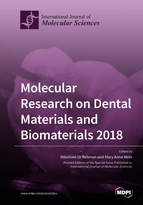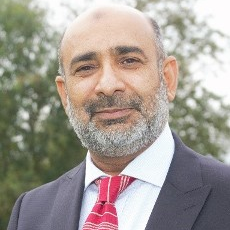Molecular Research on Dental Materials and Biomaterials 2018
A special issue of International Journal of Molecular Sciences (ISSN 1422-0067). This special issue belongs to the section "Materials Science".
Deadline for manuscript submissions: closed (30 December 2018) | Viewed by 88932
Special Issue Editors
Interests: biomaterials and regenerative medicine; bioengineering; biospectroscopy; early detection and diagnosis
Special Issues, Collections and Topics in MDPI journals
Interests: oral biofilm; dental materials; dental caries; biomaterials
Special Issues, Collections and Topics in MDPI journals
Special Issue Information
Dear Colleagues,
The history of use of dental materials and biomaterial dates back to the BC era, but the real advances in this field have occurred since the 19th century, due to the invention and understanding of new materials. These advances have been due to the continuous quest for new materials and new technologies used for the design and fabrication of new and novel materials, and, in particular, the understanding of new materials with innovative clinical applications. These have only been possible due to interdisciplinary research of a translational nature, where physicians, surgeons, dentists, and materials scientists work together for a common and targeted goal. It is important for clinicians to understand the needs of the patient, who translates those needs for the materials scientist to develop an implant to improve the quality of life for the patient.
Once the chemical, physical, mechanical, and biological properties of the materials are well understood, then these materials can be tailored to provide specific clinical applications. Development in the field of tissue engineering and regenerative medicine has only been possible due to work from this partnership. This Special Issue will provide an excellent forum to bring together different communities and publish research of a high caliber, which will be beneficial to healthcare.
I would like to take this opportunity to invite you to submit your manuscript to the Special Issue on “Molecular Research on Dental Materials and Biomaterials” in IJMS, which will surely act as an excellent vehicle for the dissemination of your research. We will accept reviews and original scientific papers in this Special Issue, and very much look forward to your valuable contribution.
Prof. Dr. Ihtesham ur Rehman
Assoc Prof. Mary Anne Melo
Guest Editors
Manuscript Submission Information
Manuscripts should be submitted online at www.mdpi.com by registering and logging in to this website. Once you are registered, click here to go to the submission form. Manuscripts can be submitted until the deadline. All submissions that pass pre-check are peer-reviewed. Accepted papers will be published continuously in the journal (as soon as accepted) and will be listed together on the special issue website. Research articles, review articles as well as short communications are invited. For planned papers, a title and short abstract (about 100 words) can be sent to the Editorial Office for announcement on this website.
Submitted manuscripts should not have been published previously, nor be under consideration for publication elsewhere (except conference proceedings papers). All manuscripts are thoroughly refereed through a single-blind peer-review process. A guide for authors and other relevant information for submission of manuscripts is available on the Instructions for Authors page. International Journal of Molecular Sciences is an international peer-reviewed open access semimonthly journal published by MDPI.
Please visit the Instructions for Authors page before submitting a manuscript. There is an Article Processing Charge (APC) for publication in this open access journal. For details about the APC please see here. Submitted papers should be well formatted and use good English. Authors may use MDPI's English editing service prior to publication or during author revisions.
Keywords
- dental materials
- biomaterials
- polymers
- bioceramics
- nanomaterials
- nano-technology
- fibers glass ionomers
- bioactive glasses
- biocomposites
- dental composites
- characterization
- properties of dental and biomaterials dental applications
- dental technology
- GTR membranes
- restorative materials
- dental implants
- dental tissue engineering
- scaffold for dental tissue engineering
- oral biology
- oral cancers
- drug delivery
- spectroscopy








